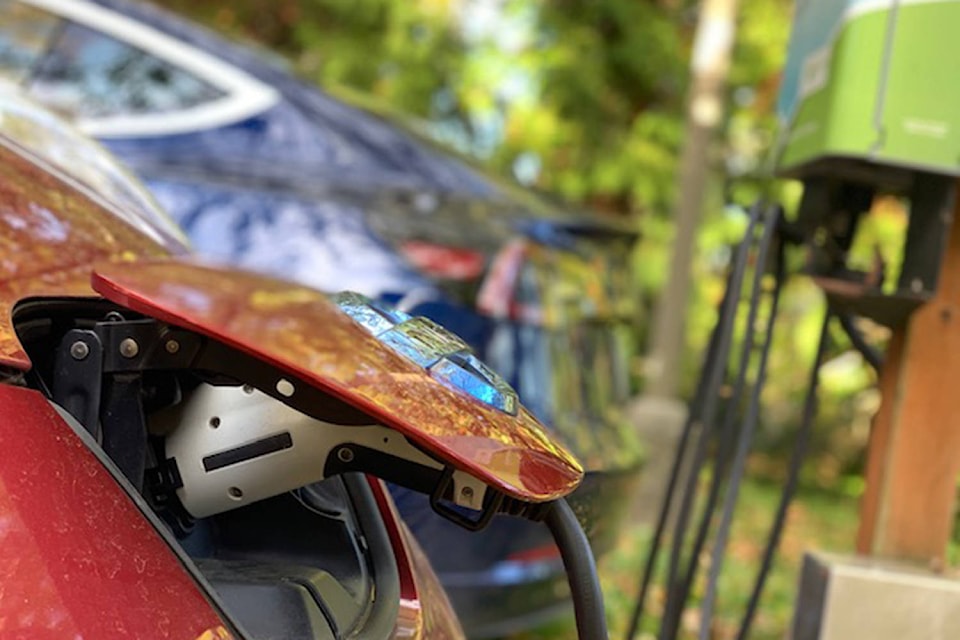A new survey says Saanich, the largest municipality on Vancouver Island, leads all surveyed municipalities in British Columbia when it comes to future-proofing construction for electric vehicles.
The survey prepared by the Victoria Electric Vehicle Association and Plug-in Richmond, two local advocacy groups, identified Saanich as the only municipality that has passed comprehensive measures to ensure electric-vehicle charging in all new developments, including those in institutional, commercial and industrial zones. The new measures approved last year will come into effect in June 2020.
The survey considered 45 municipalities and encourages the others to follow Saanich.“Every building which is constructed in the meantime represents another costly retrofit,” said James Locke, president of the Victoria Electric Vehicle Club, and John Roston of Plug-in Richmond, in a joint release.
RELATED: Can B.C. cleanly power every car if we go electric?
While Saanich is at the top, the rest of Vancouver Island, including the other 12 municipalities in the Capital Regional District (CRD), finds itself on the bottom rung of the survey. These communities either possess none or “exceptionally low” infrastructure requirements for electric vehicles.
This so-called ‘D-List’ of communities features Campbell River, Comox, Courtenay, Duncan, Nanaimo, Parksville, North Cowichan and Qualicum Beach outside of Greater Victoria.
Three Lower Mainland municipalities — Langley (Township), New Westminster, and Vancouver — find themselves below Saanich with each requiring all new residential buildings to be 100 per cent EV ready, while having have limited requirements for other zones.
Burnaby, Coquitlam, North Vancouver, Port Moody, Richmond, and Surrey find themselves below the second-tier municipalities and the bottom-placed communities, which also includes the two largest communities in the Fraser Valley, Abbotsford and Chilliwack, as well as the major communities in the Thompson-Okanagan region (Kelowna, Kamloops, Vernon and Penticton).
According to the ranking, 10 municipalities with a combined population of more than 2.2 million people have taken “proactive” steps in passing amendments to their zoning bylaws to provide for electric vehicle (EV) infrastructure in residential and, in some cases, other property uses.
The survey argues that these measures generally prevent the high costs of retro-fitting buildings and properties for EV infrastructure as EV purchases in B.C. continue to increase.
Reactions from communities on the Saanich Peninsula are still arriving.
“We are in receipt of the letter,” said Rebecca Penz, North Saanich’s communications director. “Council will consider it on its next regular agenda.”
The Peninsula News Review has also reached to Sidney and Central Saanich for comment.
RELATED: Sidney won’t add fifth public charging station for now
RELATED: Sidney could pump up electric vehicle charging across community
RELATED: Central Saanich strikes committee to help reach new climate change goals
RELATED: New Central Saanich climate goal calls for 4,800 EVs on road by 2030
Sidney, which has the second highest per-capita ownership of electric vehicles on Vancouver Island, is moving ahead with plans the municipality says would increase the number of charging stations for all new multi-family developments, along with other changes.
Central Saanich also plans a review of electric mobility as part of an ambitious plan to drastically increase the number of EVs on locals roads, and all development applications approved by council are required to install electric vehicle charging infrastructure.
Like us on Facebook and follow @wolfgang_depner
